Results 1,481 to 1,490 of 12096
Thread: Anandtech News
-
01-17-12, 12:40 PM #1481
Anandtech: Microsoft's ReFS Filesystem for Windows 8 Explained
In 2010 Microsoft announced Drive Extender v2, which was to be their next generation file system and disk pooling technology for Windows Home Server 2011. As planned, Drive Extender v2 would have been an extremely aggressive modernization of how storage worked for Windows Home Server, coupling block based storage with distributed file slices and ECC hashing all in the name of expandability and resiliency. Unfortunately Drive Extender v2 was apparently a bit too aggressive, and was canned towards the end of 2010.
Fast forward to 2012 and Microsoft has begun reassembling the band for Windows 8. Two weeks ago Storage Spaces was announced, in essence reviving much of the Drive Extender feature set. Storage Spaces allows for pooling of drives together into one (or more) pools, along with RAID1/5 style redundancy for recovering from drive failures. Storage Spaces on its own is meant to be rather resilient, but as it turns out Storage Spaces is just one part of a two part solution. Microsoft has also been working on creating a successor to the underlying file system, and that’s the subject of today’s Building Windows 8 Blog.
NTFS’s heir-apparent is the Resilient File System (ReFS), which if the name doesn’t tip you off, is all about adding yet more resiliency to file storage under Windows. Whereas Storage Spaces is about operating at a file/disk level, ReFS operates at a file/block level, concerning itself with the organization of the file system and how to handle errors within individual files. To do that, Microsoft is effectively replacing everything NTFS below the API itself.
Compared to ZFS, Drive Extender v2, and other next-generation file systems, ReFS’s feature set covers most of what you’d expect to find. At a most practical level, by dropping NTFS some of NTFS’s most annoying quirks have finally been eradicated, including the 255 character limit for file and path names. At the same time chkdsk will be far less visible as ReFS’s salvage feature will allow Windows to load a file system and take offline only the affected files and not the entire file system, thereby allowing many file system fix operations to be handled online instead of offline.
But of course the real work is in adding resiliency, where MS has added a number of features. File metadata is now checksummed so that Windows can identify silently corrupted metadata, and metadata is written in an allocate-on-write style (rather than overwriting itself) so that a torn write cannot occur. This same level of checksumming can also be extended to files themselves through what Microsoft is calling Integrity Streams, which when coupled with Storage Spaces will allow Windows to identify copies that have become silently corrupted (through bit rot and other modes of failure) and replace them with a known good copy. In fact the only DEv2 resiliency feature that's not accounted for here is ECC error correction for files (as opposed to checksums), which Microsoft is apparently leaving up to Storage Spaces' mirroring features.
Finally, as ReFS is part of Windows 8 it will be delivered starting with the Windows 8 beta next month, but as Microsoft is quick to note file system integrity is so paramount that they’re taking things very slowly even with the extensive testing they’re doing. Officially ReFS will be production ready when Windows 8 is released, where it will ship enabled on Windows 8 Server for use with storage volumes, and at which point Microsoft is hoping the real-world usage on file servers will further shake out any bugs in ReFS and otherwise validate it for use. Once it’s passed a trial-by-fire with Windows 8 Server it will be rolled out to Windows 8 Client for use with storage volumes (effectively testing it on less reliable hardware), and then finally to both platforms for use on boot volumes.
For an in-depth look at how this technology works (and a FAQ which answers, among other questions, some inquiries about the B+ tree structure of ReFS and what NTFS features won’t make the cut), check out the full post using the link below.
Source: Building Windows 8 Blog
More...
-
01-17-12, 04:10 PM #1482
Anandtech: CyanogenMod Team Shows Ice Cream Sandwich Running on HP TouchPad
CyanogenMod 9 is creeping closer and closer to release, and we're seeing it running on more devices all the time - the first ones to get development builds were mostly Samsung phones, but a video has been posted of the Ice Cream Sandwich-based OS running on the HP TouchPad. This is the latest development in the Android-on-TouchPad saga, which began not a week after HP discounted the TouchPad and dumped all of its inventory.
Video playback and the front-facing camera are apparently not working yet, but otherwise the port seems to be running smoothly. As with the Gingerbread-based TouchPad CyanogenMod betas that have been floating around for awhile now, users can choose to dual boot their machines into either Android or WebOS.
CyanogenMod 9 is set to be officially released this month or next, and will eventually support almost everything currently supported by CyanogenMod 7. According to one of its developers, the CyanogenMod distribution currently boasts over one million active users.
Source: Android Community
More...
-
01-17-12, 05:30 PM #1483
Anandtech: The Best of CES 2012
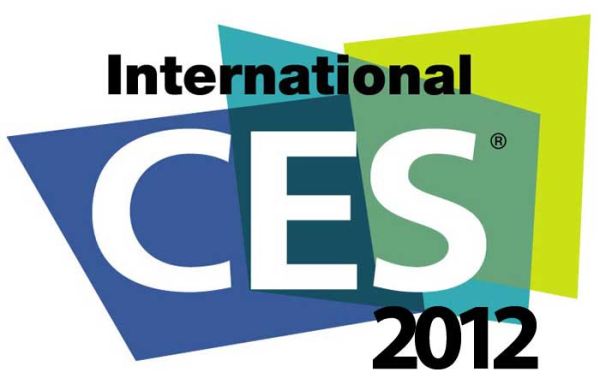
CES is all wrapped up and everyone is back home, and one of the questions I’ve been asked repeatedly by friends and family is, “What was the coolest thing you saw at CES this year?” Now, keep in mind that I am only one person and I didn’t even see a fraction of the show floor, as there were plenty of meetings set up around Vegas, so this is just my perspective on the coolest technology trends at the show. You’ll also notice that there’s a common thread in what really impressed me, but this is a highly subjective topic so take it for what it’s worth: one man’s opinion. What three things impressed me most at CES this year? Read on to find out.
More...
-
01-17-12, 11:20 PM #1484
Anandtech: Alienware's X51 is Coming
Alienware held a launch party in chilly San Francisco, California tonight to launch their upcoming X51 desktop. If you've been following them on Facebook, they've been doing a bit of a lead-up, doling out clues here and there about this new machine, but silly hype seems almost inappropriate for a launch like this one.
One thing Alienware has as leverage over boutiques is the ability to produce a custom chassis, due in no small part to their relationship with Dell. So while we've seen Micro-ATX and Mini-ITX custom builds from boutiques over the past couple of years, Alienware has the luxury of producing a more specialized enclosure. The result? A desktop gaming machine, using desktop hardware, the size of an old school Xbox 360.
Internally, the Alienware X51 uses a Mini-ITX motherboard with a pair of DDR3 slots and runs desktop Intel Core i3/i5/i7 processors, not lower wattage mobile parts. There's also a slimline optical drive (available as a DVD burner or blu-ray reader), USB 3.0 support, and built-in wireless-n networking. For the single PCI Express x16 slot, Alienware uses a riser card that allows a roughly 9", dual slot video card to be mounted inside the enclosure. Finally, beneath the video card mount is a single 3.5" drive bay, though enterprising users can actually install a pair of 2.5" drives (provided you have the necessary adaptor cage) and there are enough SATA connections on the motherboard to handle both. That means you can use an SSD and mechanical storage combination if you're so inclined. For a custom build, the internals are remarkably standardized and look like they'll allow for easy upgrading.
Since virtually every last scrap of internal real estate is being used and used efficiently, the X51 has to employ an external power brick similar to the ones used for Alienware's M17x and M18x notebooks. That also places a limitation on how much power the video card itself can draw: just 150 watts.
That video card is also where things get interesting. Alienware will offer the X51 with either an NVIDIA GeForce GT 545 or a GeForce GTX 555; both are OEM only cards, but both employ GDDR5, giving the cards enough bandwidth to handle Alienware's target 1080p resolution. The GT 545 is a cut-down GTX 550 Ti, with 144 CUDA cores, a core clock of 870MHz, and an effective memory clock of ~4GHz on a 128-bit memory bus. Note that this GDDR5 version is OEM only; the DDR3 version is the one available in retail. More serious gamers will want the GTX 555, which is a cut-down GTX 560, with 288 CUDA cores, a core clock of 776MHz, and an effective memory clock of ~4GHz on a 192-bit memory bus. Our experience with mobile GeForce hardware suggests the GTX 555 should actually be just enough to handle medium-to-high detail 1080p gaming. Finally, just to make things extra exciting, these cards and the X51 support NVIDIA's Optimus, making this a rare appearance for the power-saving technology on the desktop. Not bad at all.
The best part, though, is that Alienware will be selling the X51 starting at just $699. It's unusual for Alienware to lowball like this, but the build quality seems to be there, suggesting it could be a fantastic value. We'll have a review unit in as soon as possible.
More...
-
01-18-12, 12:51 AM #1485
Anandtech: MIPS Technologies Targets Mobile Push
There are a number of IP vendors in the SoC processor space. ARM, MIPS and PowerPC are the most popular. Each vendor holds the edge in a particular area. For example, PowerPC has a big market share in the high end communication market, thanks to its licensees ((Freescale, AMCC etc.). MIPS, on the other hand, has been maintaining its stronghold in the Set Top Box (STB) market thanks to designs from companies like Broadcom and Sigma Designs. ARM needs no introduction, thanks to the popularity they enjoy because of the mobile revolution. If you pick up a smartphone or a tablet, there is a very high probability that it is powered by an ARM core.
With the mobile revolution threatening to subsume multiple consumer markets in its convergence push, it is now essential for almost every vendor to have a mobile strategy. Not only do SoC vendors have to adapt themselves, the processor IP vendors also need to make the required push. Over the last two years, MIPS has been very vocal about getting into the mobile market. Of course, actions speak louder than words, and we stopped by MIPS's CES suite to see what they had on offer.
While ARM has a number of high profile companies like NVIDIA, TI and Qualcomm churning out ARM based SoCs for the mobile market, MIPS has decided to start at the low end in the Chinese market. MIPS claims that there are already around 8 to 12 mobile phones in the Chinese market with MIPS-based SoCs. With the tablet market set to explode in the next 2 to 3 years, MIPS is readying up for the battle ahead. MIPS has signed up around 10 mobile licensees, of which InGenic and Action Semiconductors already have products shipping. Over the last two years, MIPS has been demonstrating devices based on SoCs from these two manufacturers at CES.
Mobile devices based on MIPS SoCs have largely stayed under the radar due to their middling performance and build quality. The most successful of these devices was undoubtedly the Velocity Cruz which sold for as low as $130 and ran Android 2.3 before it was discontinued. MIPS claimed that more than a million units were sold. A couple of months back, MIPS made a huge splash with a couple of InGenic SoC based tablets from Ainol, namely, the Novo7 Paladin at $79 and the Novo7 Basic at $93. While some describe the Novo7 Paladin as a glorified MP4 player running Android, the Novo7 Basic actually bumps up the specs to include cameras for video conferencing. I had a chance to play around with the units. While it was definitely no Transformer Prime, I did find it more than acceptable for the price.
An issue with the Novo7 units for the US market is the fact that they come with a number of Chinese apps installed. MIPS indicated that a US version was in the works, and it would include predominantly US-centric apps. MIPS was also upfront about the DRM capabilities of the InGenic SoC, and indicated that while the SoC wouldn't pass muster to deliver HD Netflix streams, there should be no issues getting Netflix certification for the SD streams. Another issue is the somewhat misleading specifications of the various versions. On the Ainovo website, there are claims of the unit being capable of decoding 10b H.264 videos, which I find hard to believe. Also, while the Novo7 Paladin can output 1080p video, it is only capable of 720p decode. On the other hand, the Novo7 Basic claims full 1080p decode and output capability. Despite coming with the same SoC, buyers could get misled because of internal firmware differences (Obvious hardware differences such as the lack of cameras in the Paladin do not seem to be the only aspects resulting in a lower price). On the whole, this initiative from MIPS (getting low cost Android based devices out in the market) is a big win for Android. Google, by itself, just wants more Android systems out there. Therefore, it was no surprise that these tablets received an endorsement from Andy Rubin when they were announced late last year.
MIPS has various licensees active in the STB and communication market. The most notable amongst them are Broadcom, Sigma Designs and Lantiq. Some of the STB features and products enabled by MIPS are presented in the gallery below.
Gallery: MIPS-Based Products in Action





MIPS has a number of challenges ahead of it in the mobile front:
- There is a need to ensure that the latest version of Android is capable of running on all their processor based SoC platforms.
- MIPS needs to work with the app writers to ensure that apps that don't use the Dalvik VM, but rely on native ARM instructions, are fixed to run on MIPS-based SoCs also. There were some press releases before CES regarding this aspect (MIPS and GameLoft teamed up to ensure that the latter's games ran well on the MIPS-based tablets also)
- The most challenging issue for MIPS will be to sign up licensees with the financial might to get their SoCs fabricated at lower / cutting-edge process geometries. The InGenic SoC inside the Novo7 tablets is manufactured in a 65nm process. With Tegra 2 and other tablet SoCs being manufactured in the 40nm process and moving fast towards smaller geometries, MIPS-based SoCs are already trailing in the performance per watt metric. However, smaller geometries also bring with them costlier SoCs, so it will be a fine line that needs to be toed.
More...
-
01-18-12, 12:40 PM #1486
Anandtech: Samsung Galaxy Nexus & Ice Cream Sandwich Review
The evolution of Google’s Nexus line is an interesting one. Each year, Google chooses both a silicon partner and an OEM to make a unique hardware archetype which it caters a specific build of Android to. We've been playing with the latest Nexus - Android 4.0 on both the GSM/UMTS and CDMA/LTE Galaxy Nexus - for a while now and have put together a comprehensive review of all three. First, our thoughts on Ice Cream Sandwich and Android 4.0, and after that, a review of both devices.
Read on for the full review.
More...
-
01-18-12, 04:20 PM #1487
Anandtech: Intel's Performance Tuning Protection Plan: Warranty for Overclockers
I had heard this might be coming, but today Intel made it official. The Performance Tuning Protection Plan is a $20 - $35 plan that you'll be able to purchase either from Intel or one of its approved resellers, starting today. Typically if your CPU dies because you push it too far while overclocking, it's not covered by Intel's 3-year warranty. If you purchase the PTPP for your CPU however, you are given a single replacement free of charge. Any future damage isn't covered and the replacement is only available as long as your CPU is still covered under its original warranty. And no, you can't buy multiple plans for the same CPU.
A table of supported CPUs and PTPP cost are below:
This is very much a trial for Intel. Intel will only offer the PTPP for the next 6 months, at which point it will likely regroup and measure the effectiveness of the program. Intel also reserves the right to change the terms of the plan or discontinue it at its own leisure. Presumably if you purchase one of the plans however you'll be covered until your warranty runs out.Intel Performance Tuning Protection Plan Price Intel Core i7 3960X $35 Intel Core i7 3930K $35 Intel Core i7 2700K $25 Intel Core i7 2600K $25 Intel Core i5 2500K $20
Most end users (including enthusiast overclockers) will likely not benefit from this additional coverage. It's really for the competitive overclockers and the folks who are truly pushing the limits of what Intel's silicon can do. I can definitely see the value for the hardcore overclocking community.
More...
-
01-18-12, 05:00 PM #1488
Anandtech: AT&T to Launch New Data Plans For Smartphones, Tablets
Beginning this Sunday, January 22, AT&T will begin offering new data plans to its US smartphone and tablet customers, its first change to the plans since June 2010.
The new plans aren't designed to save money for existing smartphone customers: the previous entry-level Data Plus plan, which offered customers 200MB of data a month for $15, has been replaced by a Data Plus plan that offers 300MB for $20, a $5 increase for just a 100MB increase. The hike is less ostentatious for the middle and top tiers: the DataPro 2GB ($25) and DataPro 4GB ($45) plans have been replaced by DataPro 3GB and DataPro 5GB plans that run $30 and $50, respectively, which is in line with the company's $10/GB overage charges. As with before, tethering and mobile hotspot capabilities are only available for the top tier (5GB) plan.
The story is similar for tablet users: there are 3GB and 5GB Data Connect plans available for $30 and $50, while the price and data cap remain the same for the $14.99 250MB plan.
Current AT&T customers can elect to stay with their current plans, which was the case when AT&T stopped offering unlimited data plans to new customers, but new subscribers will only be able to choose from among the new plans. For current customers, the new plans make sense only for 2GB and 4GB subscribers who regularly go over their caps - an extra GB for $5 is more attractive than an extra GB for $10. Otherwise, I'd recommend sticking with what you've got.
Source:AT&T
More...
-
01-19-12, 11:10 AM #1489
Anandtech: Kingston's SSDNow V+200: More Affordable SandForce
Last year Kingston introduced its HyperX line of SF-2281 based SSDs. HyperX marked the first time SandForce and Kingston ever worked together but the relationship continued. Kingston quietly introduced the SSDNow KC100, another SF-2281 based solution aimed at the corporate client. SandForce worked with Kingston to deliver a custom firmware that exposed more SMART attributes on the KC100. That drive also comes with a 5-year warranty and uses Intel's 25nm NAND with 5K p/e cycles.
Today Kingston announced its SSDNow V+200. The V-series drives have traditionally occupied the value space (relying on JMicron controllers) while the V+ drives were supposed to be a bit higher performance, but still price competitive. Kingston's V+ drives used Toshiba controllers in the past, however Toshiba is a bit late to the game in delivering a 6Gbps solution forcing Kingston to look elsewhere. The V+200 is SF-2281 based however it uses Intel's 25nm asynchronous NAND with only 3K p/e cycles. As I've mentioned before, even at 3K program/erase cycles no desktop user should be able to wear out their NAND. SandForce's realtime compression does a great job of ensuring NAND longevity as well. The move to asynchronous NAND does impact performance, making the V+200 a lot like OCZ's Agility 3. For an understanding of async vs. sync NAND I'd suggest looking at our Agility 3 review.
The MSRPs of the V+200 line are quite high, although I'm guessing street prices will be a lot lower (based on this table you can get a HyperX 120GB for less than a 120GB V+200). NAND prices vary so much from week to week that the advantage of going with async vs. sync NAND isn't always all that great. I suspect the next major dip in NAND pricing will either come from using TLC or newer 20nm MLC NAND.
Kingston SSDNow V+200 60GB 90GB 120GB 240GB 480GB Part Number SVP200S3/60G SVP200S3/90G SVP200S3/120G SVP200S3/240G SVP200S3/480G Controller SF-2281 SF-2281 SF-2281 SF-2281 SF-2281 Sustained Random 4K R/W 12K/47K IOPS 20K/47K IOPS 20K/44K IOPS 36K/43K IOPS 43K/30K IOPS Max Random 4K R/W 85K/60K IOPS 85K/57K IOPS 85K/55K IOPS 85K/43K IOPS 75K/34K IOPS Sequential Reads Up to 535MB/s Up to 535MB/s Up to 535MB/s Up to 535MB/s Up to 535MB/s Sequential Writes Up to 460MB/s Up to 480MB/s Up to 480MB/s Up to 480MB/s Up to 480MB/s Warranty 3-years 3-years 3-years 3-years 3-years MSRP $140 $196 $245 $479 $970 Upgrade Kit Part Number SVP200S3B/60G SVP200S3B/90G SVP200S3B/120G SVP200S3B/240G SVP200S3B/480G MSRP w/ Upgrade Kit $156 $211 $260 $494 $985
Gallery: Kingston's SSDNow V+200: More Affordable SandForce





More...
-
01-19-12, 12:10 PM #1490
Anandtech: Apple Announces Digital Textbook Availability, iBooks Author App
Apple today announced that it would begin offering digital textbooks on the iPad via its iBooks app. The books, which currently focus on high school-level subjects but will later expand to cover the entire K-12 curriculum, can cost up to $14.99, and Apple is working with publishing companies such as Pearson, McGraw Hill, Houghton Mifflin Harcourt, and DK Publishing to make it happen. The textbook store is available in iBooks 2.0, which requires iOS 5 and is currently available as an update to the original iBooks app.
The digital textbooks can include interactive elements like pictures, video, or 3D models, which will be displayed more prominently while the tablet is in landscape mode, while flipping it into portrait mode will display a text-centric view. Students can highlight text in multiple colors and take notes, and use the app to automatically display flash cards of their highlights and notes mixed in with glossary terms from the book. Glossary terms, usually displayed in bold, can be tapped to bring up definitions of the word both from the book and from the built-in dictionary, and the text is fully searchable.
Of course, most of these features are imports from existing eBooks and old-school educational CD-ROMs - embedded video, highlighting, note taking, and many of the other things Apple showcased aren’t new innovations, though they appear to be implemented well here. More interesting was the iBooks Author app for OS X, available for no cost in the Mac App Store.
iBooks Author is used to create these interactive textbooks - pictures, videos, and Keynote presentations can be dragged into any of the provided templates, and authors of existing books can import their Word or Pages files to save time. More advanced coders can also create interactive widgets using HTML and Javascript. Publishing books requires an iBookstore seller account, the iTunes Producer app, and an active iTunes Connect contract with Apple - a full FAQ is available here. Once all of these requirements are met, the book can be submitted to Apple for review. Textbooks have a maximum size limit of 2GB.
The technology behind all of this looks solid - iBooks Author makes eBook authoring and publishing relatively painless, and buying the books on the iPad is cheaper than buying a physical copy, at least at face value. Carrying around a single iPad is much less burdensome than carrying a book, and the ease with which students can look up words, take notes, and review material is impressive.
Even so, to my mind there’s a sizable gap between what Apple announced today and something that could truly make digital textbooks ubiquitous: the cost of entry, i.e. either purchasing an iPad for each student’s use or mandating that students purchase iPads for school use, is fairly high, even if you figure for a conservative 3-4 year replacement cycle (and even with AppleCare, iPad warranties run out after two years, making a 2-3 year cycle more likely, especially once you factor in iPads that are dropped, spilled on, or otherwise destroyed). Over time, the reduced cost of the books may offset the cost of the iPads, but the upfront cost (along with the cost of supporting the devices) is likely to scare away cash-strapped public schools. The announcements made today are less likely to revolutionize education, and more likely to increase the usefulness of iPads in school systems that are already using them.
iBooks Author requires Lion and is currently available for free in the Mac App Store. iBooks 2.0 is available for the iPad, iPhone, and iPod Touch as an upgrade for the original iBooks app, though digital textbooks are not available on the smaller devices.
Source: Apple
More...
Thread Information
Users Browsing this Thread
There are currently 9 users browsing this thread. (0 members and 9 guests)






 Quote
Quote


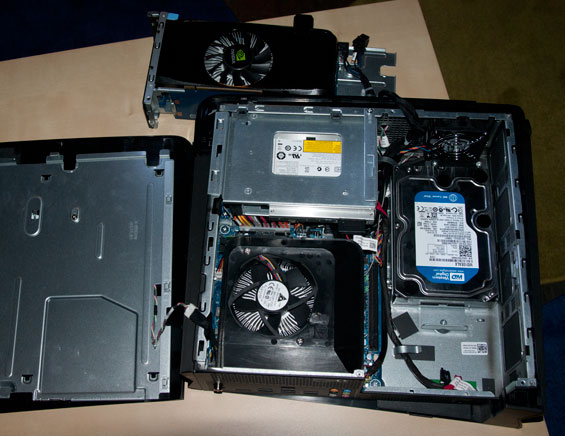


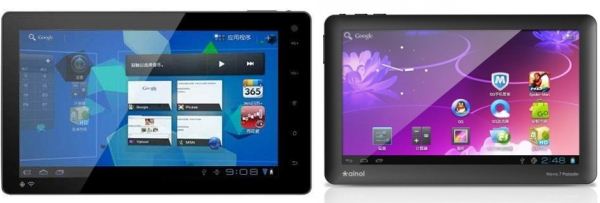

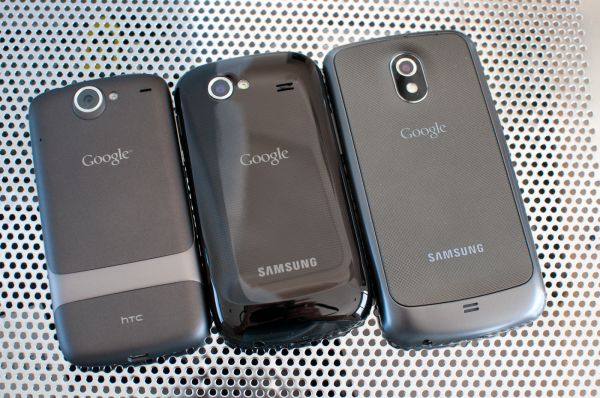
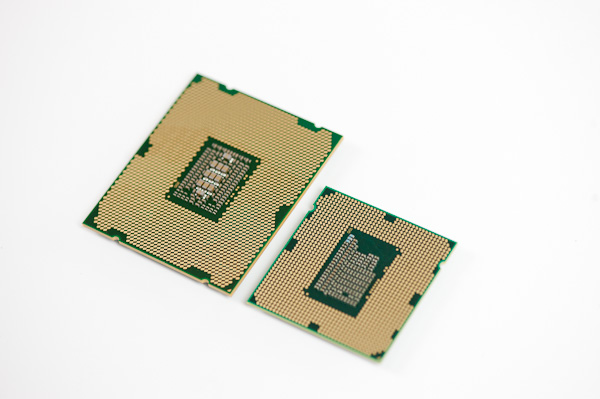

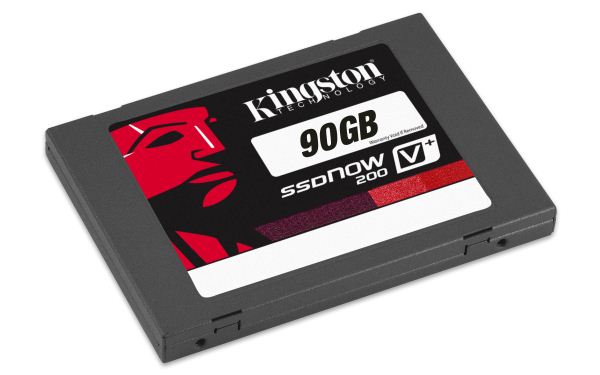
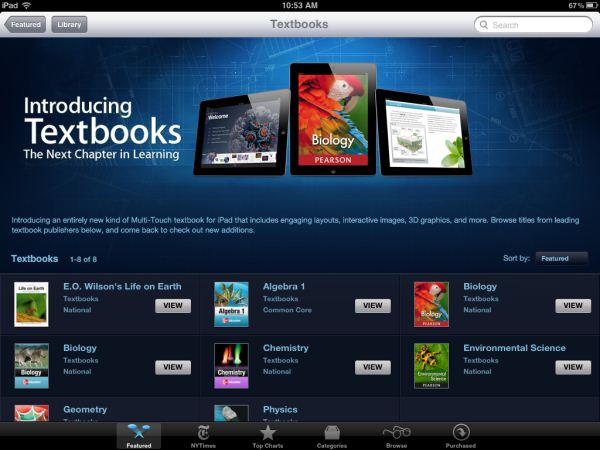

















Bookmarks